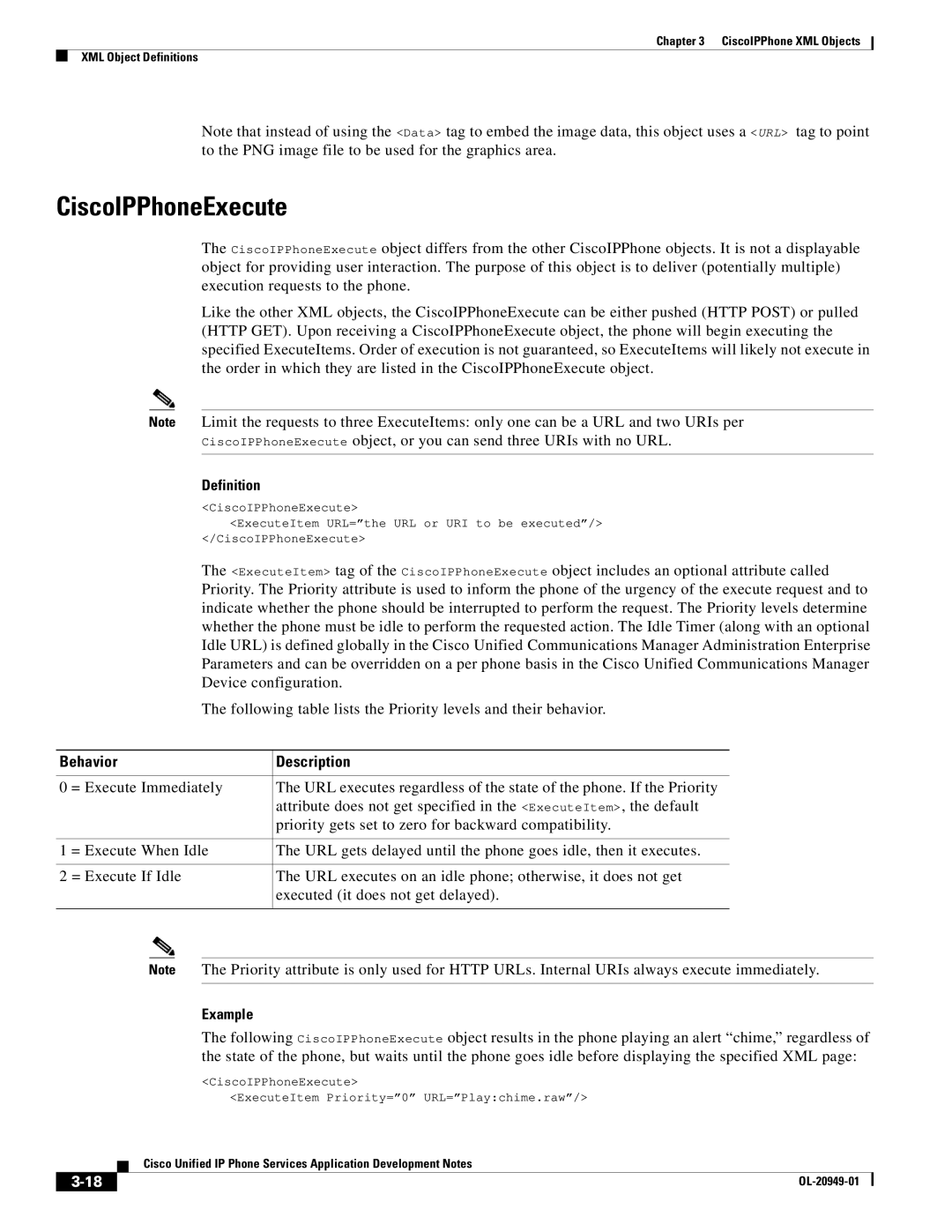
Chapter 3 CiscoIPPhone XML Objects
XML Object Definitions
Note that instead of using the <Data> tag to embed the image data, this object uses a <URL> tag to point to the PNG image file to be used for the graphics area.
CiscoIPPhoneExecute
The CiscoIPPhoneExecute object differs from the other CiscoIPPhone objects. It is not a displayable object for providing user interaction. The purpose of this object is to deliver (potentially multiple) execution requests to the phone.
Like the other XML objects, the CiscoIPPhoneExecute can be either pushed (HTTP POST) or pulled (HTTP GET). Upon receiving a CiscoIPPhoneExecute object, the phone will begin executing the specified ExecuteItems. Order of execution is not guaranteed, so ExecuteItems will likely not execute in the order in which they are listed in the CiscoIPPhoneExecute object.
Note Limit the requests to three ExecuteItems: only one can be a URL and two URIs per
CiscoIPPhoneExecute object, or you can send three URIs with no URL.
Definition
<CiscoIPPhoneExecute>
<ExecuteItem URL=”the URL or URI to be executed”/>
</CiscoIPPhoneExecute>
The <ExecuteItem> tag of the CiscoIPPhoneExecute object includes an optional attribute called Priority. The Priority attribute is used to inform the phone of the urgency of the execute request and to indicate whether the phone should be interrupted to perform the request. The Priority levels determine whether the phone must be idle to perform the requested action. The Idle Timer (along with an optional Idle URL) is defined globally in the Cisco Unified Communications Manager Administration Enterprise Parameters and can be overridden on a per phone basis in the Cisco Unified Communications Manager Device configuration.
The following table lists the Priority levels and their behavior.
Behavior | Description | |
|
|
|
0 | = Execute Immediately | The URL executes regardless of the state of the phone. If the Priority |
|
| attribute does not get specified in the <ExecuteItem>, the default |
|
| priority gets set to zero for backward compatibility. |
|
|
|
1 | = Execute When Idle | The URL gets delayed until the phone goes idle, then it executes. |
|
|
|
2 | = Execute If Idle | The URL executes on an idle phone; otherwise, it does not get |
|
| executed (it does not get delayed). |
|
|
|
Note The Priority attribute is only used for HTTP URLs. Internal URIs always execute immediately.
Example
The following CiscoIPPhoneExecute object results in the phone playing an alert “chime,” regardless of the state of the phone, but waits until the phone goes idle before displaying the specified XML page:
<CiscoIPPhoneExecute>
<ExecuteItem Priority=”0” URL=”Play:chime.raw”/>
| Cisco Unified IP Phone Services Application Development Notes |
